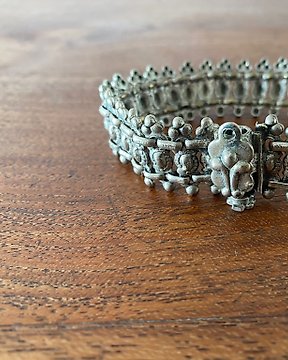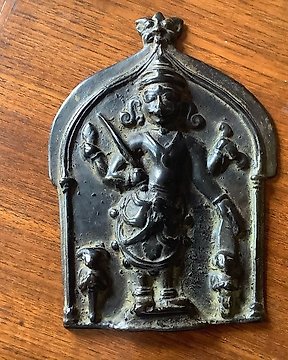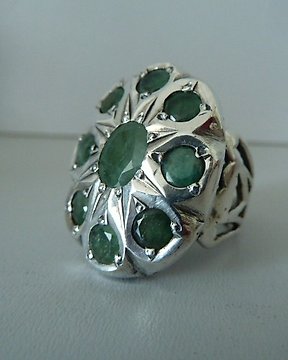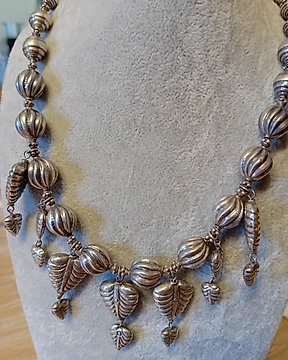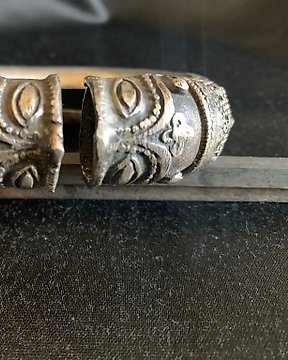Miniatura według Kamseha (Iskandernama) - Guache - Indie - 1819
Nr 81615131

Miska kaszmirska Kashkul - Srebro - Indie - 19 wiek
Nr 81615131

Miska kaszmirska Kashkul - Srebro - Indie - 19 wiek
Indian Kashmir silver boat-shaped kashkul in the form of a kovsh with pierced and chased decoration.
The traditional bowl has an elliptical body with stylised mythical bird heads as handles and features embossed and engraved leaf designs on the body, a pierced floral rim and a raised foot.
Made in Kashmir, India, c. 1880's.
110.44 g
6.5 cm tall
15 cm long
6.5 cm wide
Kashmiri silverware is sometimes described as Indo-Iranian or Indo-Persian and was influenced by Indian, European and Middle Eastern design. Elements of the ornamentation, such as the stylised flowers and arabesques, show the artistic influence of the Middle East whilst design motifs are derived from the flowers and foliage of Kashmir’s native plants, commonly the chinar tree, poppy plant and coriander leaf.
The kashkul, or beggar’s bowl, is perhaps the most emblematic accoutrement of the wandering dervish. These typically boat-shaped vessels were made in a variety of media, including coco-de-mer shell, wood, metal, and ceramic. Dervishes used them primarily to collect and store alms (their main source of sustenance) and occasionally as drinking vessels. In later centuries, many were marketed as decorative objects since a devoted dervish would be unlikely to carry an elaborately carved kashkul as it would contradict his belief in the renunciation of worldly goods in favour of unconditional devotion to the Divine. The kashkul has a number of metaphorical associations. For example, it represents the cleansing of a Sufi’s soul of all extraneous earthly desires in preparation for the acceptance of Divine love and a dervish's life of poverty.
Typical Kashmiri kashkuls are boat shaped vessels terminating in a stylised dragon, snake or bird head ‘prow’ at either end. The heads are pierced, allowing silver rings to be threaded through so that the kashkul could be suspended from a chain. Examples were sometimes commissioned by wealthy patrons and donated to dervish orders or a passing holy man.
Excellent antique condition. Rim has small ding.
Przedmioty, które mogą Ci się spodobać
- 16+
Ten przedmiot został zaprezentowany w
Jak kupować w serwisie Catawiki
1. Odkryj coś wyjątkowego
2. Złóż najwyższą ofertę
3. Dokonaj bezpiecznej płatności

